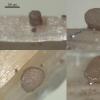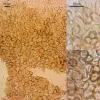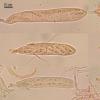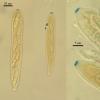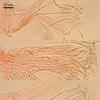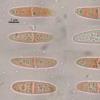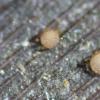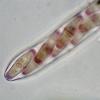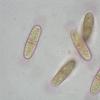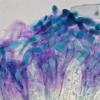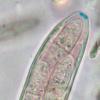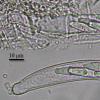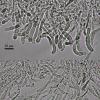
12-01-2026 22:02
Ethan CrensonHello all, I am hoping someone will have some ins

11-01-2026 20:35
Hello.A very tiny pyrenomycete sprouting sparsely

13-01-2026 18:55
Rees CronceStrossmayeria sp. on indet. decroticate hardwoodTh

13-01-2026 07:57
 Danny Newman
Danny Newman
cf. Bombardia on indet. decorticate woodAppalachia

13-01-2026 10:13
 Danny Newman
Danny Newman
Cordieritidaceae sp. on indet. wood w/ Hypoxylon s

13-01-2026 07:28
 Danny Newman
Danny Newman
Chlorociboria glauca on indet. decorticate logThe

13-01-2026 07:14
 Danny Newman
Danny Newman
Neodasyscypha cerina on indet decorticate logThe S

13-01-2026 09:10
 Danny Newman
Danny Newman
Dasyscyphella chrysotexta on indet. decorticate ha

13-01-2026 08:43
 Danny Newman
Danny Newman
Tricladium varicosporioides on indet. decorticate

13-01-2026 08:49
 Danny Newman
Danny Newman
Coccomyces sp. on fallen Rhododendron leavesPretty
The released spores were without clear truncate extensions, rather with irregular gelatinose sheath, but inside the asci such extensions could be traced.
Apothecia turbinate to discoid, sessile, 260-430 mk in diam, about 150 mk high, hymenium flat or concave, light brownish, outer surface brown, site single, superficially on the substrate.
Excipulum from textura globosa, cells about 15 mk at base, 10 mk at flanks, at the edge short-clavate, about 10 mk long; cells with thickened walls, look as glued together, brown at flanks, lighter at the base and edge; asci wide-cylindrical or some enlarged to obtuse-conical tip, with short stalk, with small clamp, pore euamyloid, 74-105 x 12,4-17,6; paraphyses cylindrical, branched, segmented, with enlarged, circinate apices, which rised under the asci tips, immersed in gelatinouse substance, 1,5 mk broad at base, 3,5 at tips; spores ellipsoid, 2-celled, when in asci with gelatinose extensions (seen in lugol), 22 (20,6-25,3) x 5,5 (4,8-6,4).

Niptera lacustris is a difficult species but should be compared.
Zotto

N. eriophori is a regular species in the bogs of the Natural Parc of SOmiedo where we will have an Ascomycota congress in june.
We find it on dead leaves of Eriophorum angustifolium.
A tiny species indeed (0,15 - 0.25 mm) with extroardinary micro features (swollen paraphyses, gelatinous spore extensions...)
Here are a few images .
Amitiés
Michel

While the type of Niptera lacustris is inamyloid, the specimens in my folder "lacustris IKI+" are not easily separable from N. eriophori. I did not see the conspicuous gel caps at each end inside the living asci, however, only ?sometimes at one end. That collection also tends to have 2-septate spores inside the living asci.
Zotto
I checked several other apothecia to see better gelatinose extensions, but they are not present really. Only gelatinose sheath may be seen inside asci (which enlarged sometimes at ends), but released spores are smooth. Paraphyses not changes in KOH (but they are dead). Ascus pore blue in lugol-water. All spores 1-septated, 22,2 (20,9-24) x 5,8 (5,2-6,7) (Q=3,8; N=16) (in N. eriophori, as descripbed in Nannfeldt, they are some smaller). And paraphyses in mine up to 3,5 mk at enlarged tips (not as wide as in Nannfeldt, 5 mk).
So, probably it is "Niptera lacustris J+" (i don't know what it is now, i refer to Zotto's collection). The paper on Niptera which i found (Nannfeldt, 1985) in german and need me more time to understand.
I found something more close to N. eriophori in my collection of pictures (without herbarium specimen). It has clear gelatinose extensions even in low quality pictures. Paraphyses there look similar as in previous collection. Should be searched again, so).

Your new images are clearly N. eriophori.
Spore size varies considerably in this species, between about 15-20 x 4.5-5 up to 20-27 x 6-7.5.
KOH gives a yellow reaction to both this and "lacustris IKI+".
Zotto
